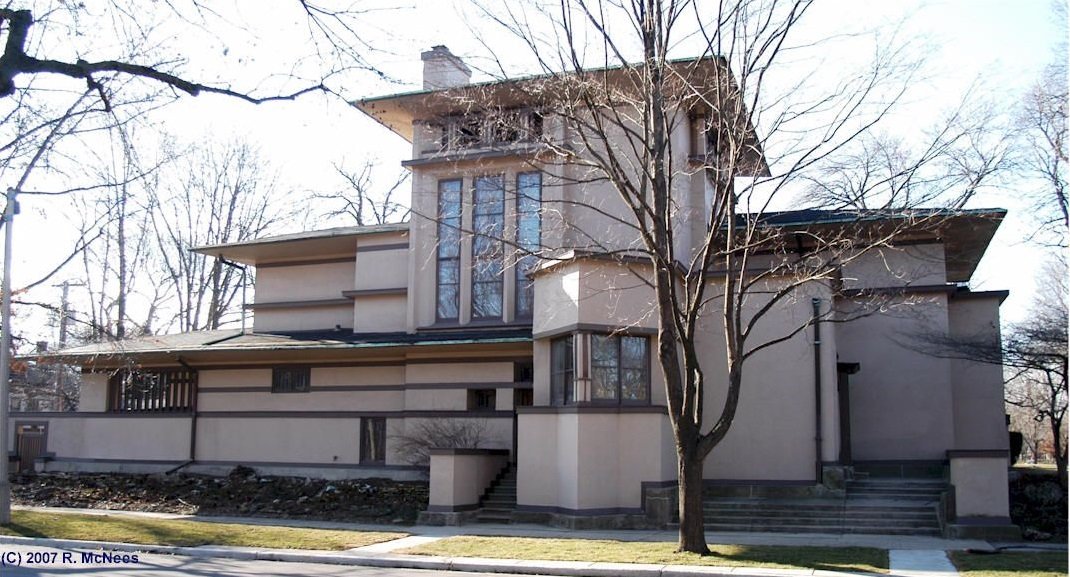#11984. Horizontal Prairie Style Facade: Harmony of Geometry and Nature

Before us stands an impressive example of Prairie Style architecture, showcasing the characteristic features of Frank Lloyd Wright's work. The building is distinguished by its horizontal composition with an emphasis on flat, projecting roofs with wide overhangs, creating a sense of unity with the surrounding landscape.
The facade is executed in light beige tones with horizontal lines accentuating the structure's breadth. Vertical elements are represented by tall narrow windows, grouped together and adorned with geometric stained glass. The central part of the building rises above the rest of the volume, creating a dynamic silhouette while maintaining the overall horizontal direction.
Particularly noteworthy are the low retaining walls typical of the Prairie Style, which visually connect the house to the ground. The massive base floor serves as a foundation for the lighter upper volume. The purity of geometric forms and restrained decoration emphasize the organic nature of the architecture and its connection to the natural surroundings.
In modern house construction, one can utilize techniques from this style: horizontal articulation of the facade, projecting roof cornices, grouping windows into ribbon compositions, using natural materials and colors, and creating transitional spaces between the house and garden to achieve harmony with the environment.